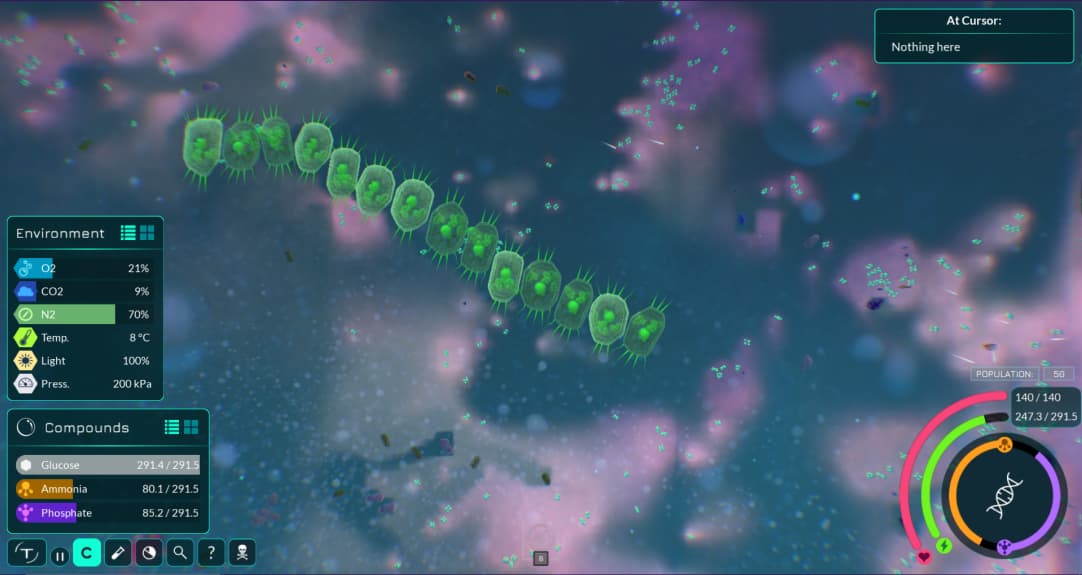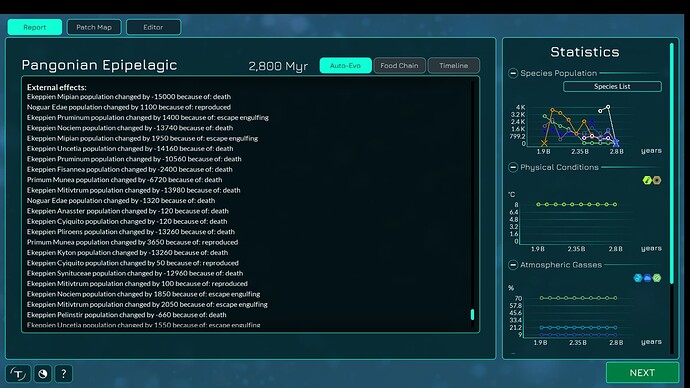Aight, so I got the email notification 6 days ago, but when I checked the thread at the time, the comment literally didn’t appear. I had assumed that you had posted and deleted, until today. so that’s why I hadn’t responded till now, I apologize for not checking again sooner.
Now with that out of the way, I must say that you have completely missed my point.
Do cell walls and certain parts need balance changes?
Absolutely.
Will plants and other sessile organisms eventually need better ways of acquiring phosphate?
Absolutely.
Do either of those things change what I said in my last comment?
No.
Did I, at any point, say that plants or any other sessile play styles shouldn’t be playable?
Also no.
How you got that idea from me saying “there will always be…” is beyond me.
You keep saying that what you are trying to do with this species isn’t “viable”, yet what you are doing with it very clearly demonstrates that it is.
It generates it’s own glucose and ammonia, kills everything around it, and has no real competition. That, by definition, makes it the most viable organism in its environment.
The issues with collecting enough phosphate are unreasonably annoying, but you could do it if you really wanted to spend that time doing it. An engulfing organism, that does all the same things, isn’t more “viable” than this one, it just progresses faster. Therefore, you aren’t complaining about viability. You are complaining about how long your cells life cycle takes.
That life cycle just so happens to be entirely within your control, as a player.
That’s what my actual point was, because such mundane life cycle issues can and will be possible, no matter what balance changes occur. This will especially be the case in mid to late multicell, when there will be so much customization, that it’s absolutely certain that boring yet viable play styles will exist, and possibly even be meta, or at least easier to play than the alternatives.
Let’s go back to unicellular, for an easy example.
Let’s say that the devs add substrate to some patches, which is something a few of them have already stated they want to see added. Now let’s assume that they also add a way to “bind” to the substrate, and that doing so would allow you to passively absorb the phosphate that would be in that ground.
This solves the problem of getting phosphate as a sessile organism, and allows you to become a very simple “rooted” plant.( For any devs watching, I would absolutely love to see this feature added)
It also turns thrive into a game of doing nothing except watching your meters go up, which doesn’t exactly elate your average fortnight player.
Go figure.
The beauty of the game, however, is that this doesn’t really matter.
Every player is capable of tailoring their organism to be fun to play, for them.
The devs can obviously adjust the balance of parts, and add new ones, to create potential fun, but it is up to the players to actually make a creature that is fun.

